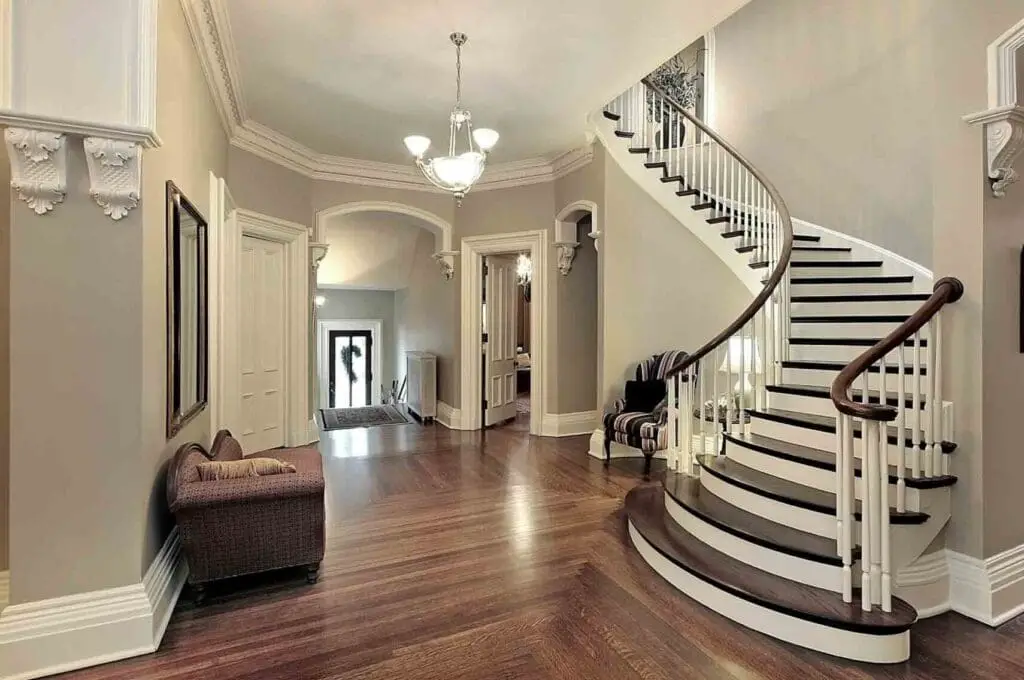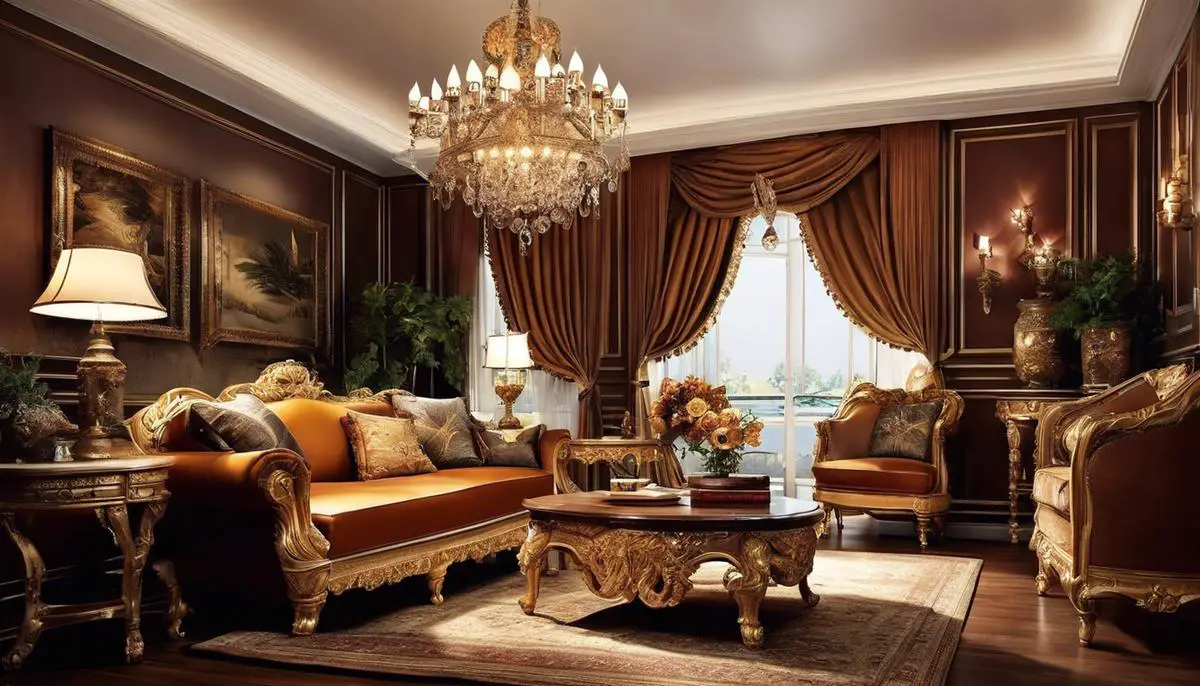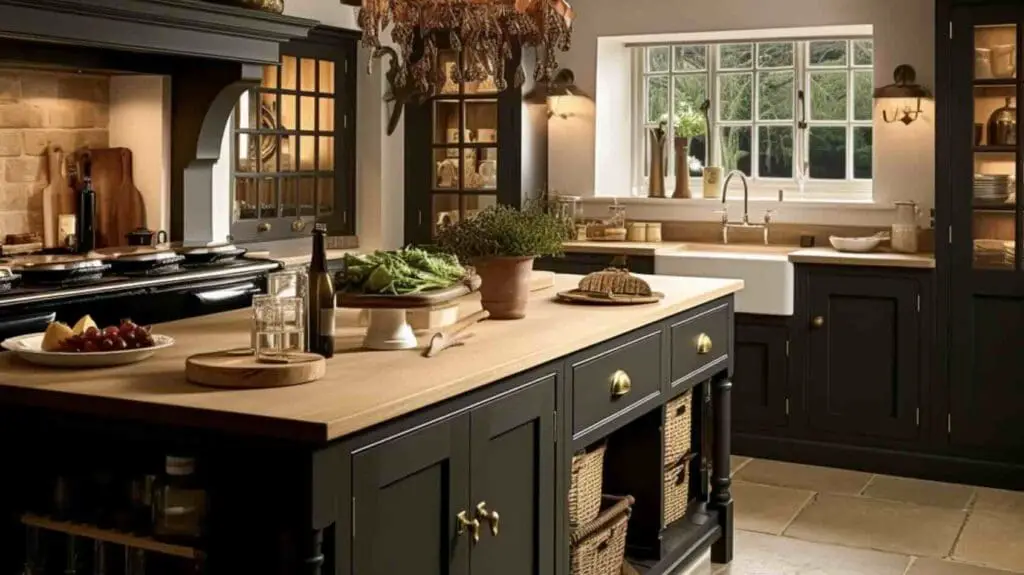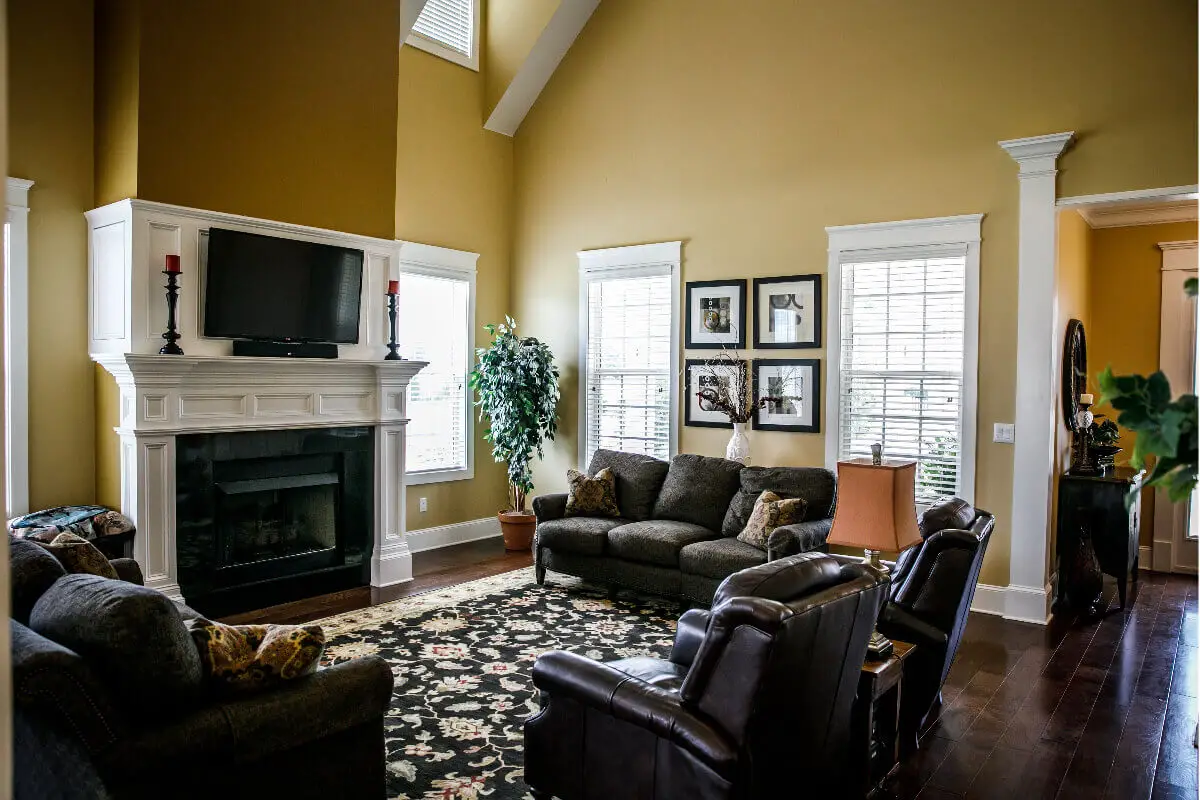Within the vast expanse of interior design, traditional home decor holds a prime spot, esteemed for its elegance, charm, and timeless grace. Tracing its roots back through the kaleidoscope of history, the traditional decor has survived the ebb and flow of trends, cementing its place in the hearts and homes of many.
This exploration delves into the richness of traditional home decor, its fascinating evolution and pivotal elements, the delicate balance of mixing it with modernity, and the plethora of inspiration it offers. Graced with a perfect medley of research, visual content, and practical tips, anticipate a deep, insightful journey into the world of traditional home decor.
Table of Contents
- The Evolution of Traditional Home Decor
- Aesthetic Evolution: Tracing the Transformation of Traditional Home Decor
- The 1940s: Function Before Fashion
- 1950s: Rise of the Homemaker
- 1960s: Going Bold & Bright
- 1970s: Incomes the Eclectic
- 1980s: The Return of Sophistication
- 1990s: Minimalism Takes the Stand
- 2000s-Today: Individuality Reigns Supreme
- Critical Elements of Traditional Home Decor
- Balancing Modernity with Tradition
- Inspired Spaces: Examples of Traditional Home Decor
- Related Content
The Evolution of Traditional Home Decor
Aesthetic Evolution: Tracing the Transformation of Traditional Home Decor
Home decor, a reflection of the self, a declaration of taste, and a manifestation of personality, does more than fill our living spaces with beauty and functionality. It also charts a fascinating trajectory through time, evolving and morphing, mirroring social, cultural, and technological developments across decades.
This article aims to peel back the layers of wallpaper, rugs, and curated coffee tables to reveal how traditional home decor has experienced its fashionable makeover.
Let’s board our aesthetic time machine and embark on an enriching journey, exploring the defining characteristics of home decor across various decades.
The 1940s: Function Before Fashion
Emerging from the austere times of World War II, the 1940s leaned heavily on practicality. Homes were tiny, times were hard, and decor centered on functionality. Think sturdy wooden furniture, floral wallpaper, and pastel color palettes.
1950s: Rise of the Homemaker
As we marched into the 50s, lavishness began creeping into home decor. In an era marked by the rise of the homemaker, extravagance, and indulgence, they started to peek around the corner. Chrome kitchen sets, colorful appliances, and wall-to-wall carpeting dictated the aesthetic tenor of the decade.
1960s: Going Bold & Bright
Ah, the 60s! It is a time of peace, love, and unforgettable deviant decor choices. Tossing the traditional aesthetic to the wind, bold, brash colors, psychedelic prints, and pop art owned this era. Forget matching – clashing was the name of the game!
1970s: Incomes the Eclectic
The 70s were all about expressing individuality and challenging societal norms. The home decor trends of the time echoed these sentiments, with an eclectic mix of macrame wall hangings, shag rugs, and avocado green everything!
1980s: The Return of Sophistication
The 80s saw a return to more restrained and sophisticated decor, albeit with a don’t-forget-I’m-here flamboyancy. Floral chintz is rampant; pastel room themes and exaggerated silhouettes in furniture design characterized the decade.
1990s: Minimalism Takes the Stand
As we stepped into the 90s, there was a marked shift towards minimalism. The clutter of the previous decades was replaced with clean lines, natural woods, and warm color palettes as people sought to create tranquil and relaxing spaces.
2000s-Today: Individuality Reigns Supreme
From the 2000s till now, we’ve seen a splendid mashup of styles. There’s been a resurrection of mid-century modern, a fascination with boho chic, the emergence of farmhouse rustic, and an obsession with Scandinavian design. What truly stands out is the emphasis on individual style, encouraging one to create a unique and personal living space.
So, what does this tell us about the evolution of traditional home decor? It shows us that the ‘traditional’ is a moving target, fluid and changing. As we advance, the only certainty is that the styles we now consider avant-garde may become tomorrow’s tradition.
Each era sprinkles magic onto the aesthetic landscape, shaping it into a rich tapestry threaded with cultural relevance and personal resonance. Home decor is more than mere stuff in a house; it’s a living chronicle of our collective growth and journeys.

Critical Elements of Traditional Home Decor
Several essential elements inevitably make their mark as we delve into traditional home decor. Traditional home decor should not be seen as a monolithic entity but rather as a vibrant kaleidoscope that pays homage to time-honored elegance layered over the decades.
This journey would be incomplete without acknowledging those key elements that, although varying widely, manage to pull together the aesthetics of traditional home decor.
Anchoring Antiques
There’s no disputing the unrivaled charm vintage pieces add to a room. The allure of prior ages can manifest in showpiece antiques or heirlooms handed down through generations, acting as perfect anchor pieces in traditional home decor.
Appreciating and incorporating antiques makes a resounding statement of love for history, imbuing the space with palpable charm and personality.
Synthesis of Symmetry
Symmetry lies at the heart of traditional interior design. Be it window treatment, furniture arrangement, or artwork display, maintaining visual balance is crucial, imparting a sense of tranquility. Symmetrical spaces resonate with quintessential order and harmony, attributes deeply entwined with the spirit of traditional home decor.
Tactile Textiles
The traditional home has always embraced the richness of varied textures. Luxurious fabrics like silk, velvet, and brocade, known for their opulent feel and visual density, often find a home in these spaces. Textiles don the starring role, enlivening furniture and windows and delivering traditional decor’s trademark warmth and comfort.
An Ode to Ornate Details
Ornate carvings, inlays, and moldings are frequent features, adding an element of grandeur and time-honored sophistication. These intricately designed pieces evoke the elaborate detailing prevalent in historical architectural styles, embedding a sense of regality within the home. It’s all about the details regarding traditional decor – the more meticulous, the merrier.
Palette of Warmth
The color palette of a traditionally styled home leans toward soft, muted shades. Warm, earthy tones pave the way for a welcoming, cozy atmosphere. Subtle neutrals, calming blues, rich greens, or soft pastels are favored, adding a whisper of color while maintaining the seamless sophistication flow.
Lighting the Way
Lighting in traditional interior design is much more than mere utility. Stunning chandeliers, ornate sconces, and beautifully crafted table lamps bring an element of surprise, elegance, and character.
Accent lighting becomes an avenue to showcase treasured pieces, artfully illuminating the literary triumphs lined on well-loved shelves or a cherished antique piece.
Traditional home decor pays homage to the past while intertwining comfort and ease. It’s about capturing the essence of the old world charm, cherishing the timeless elegance, and embodying the love for history.
No matter the current trend, the allure of the traditional in-home decor will eternally echo its resonance – a classic, forever in style.

Balancing Modernity with Tradition
Fusing Trends: The Art of Conservation and Innovation
Here in the digital age, we’re savoring a buffet of design inspirations across decades of ever-changing trends. Marrying the old and the new is the key to crafting throwback looks with fresh spins. And while such a synergy can sound daunting, especially to novices, it truly isn’t. Wand design is all about personal expression, after all!
The charm of vintage elements can’t be overstated—their time-tested beauty lends a sense of depth and character to any space. On the other hand, modern designs impress with their clean lines, innovative materials, and ultra-chic vibes.
Finding a happy medium between these aesthetics allows for creating call-backed yet contemporary spaces, comfortable yet cutting-edge.
Artful Juxtaposition:
Start the traditional and modern conversation by cleverly juxtaposing them within your space. Position a sleek, minimalist couch against an antique brick wall or combine heirloom dishes with a modern dining table. This fusion of trend lines creates an interesting interplay that sparks any room.
Approachable modernism:
The key to modern aesthetics is their simplicity, yet some find the strictly modern look too cold or austere. To soften the edge of modern design, infuse it with vintage touches. Vintage-themed wallpapers, laurel-wreath motifs, or curated collections on floating modern shelves keep the space warm and inviting while maintaining a clean look.
Neutrality as a bridge:
Neutral hues present an effortless way to blend styles. Lush beige or warm gray is a perfect backdrop for earthy vintage pieces and sleek modern designs. The neutrality keeps things calm and seamless, regardless of the decade from which your decorations hail.
Time-traveling technology:
Don’t leave out the tech when bridging aesthetics! Vintage-inspired tech, such as brass-finished light fixtures or mid-century modern record players, balances the modern trend for high-tech home devices.
Mixing materials:
Combining different materials is another intelligent way to craft a harmonious blend in your space. Classic woods, velvets, or leathers can live harmoniously with modern acrylics, metals, or glass.
Ultimately, the key to balancing traditional and modern elements is ensuring both aesthetics have a strong voice within your space. It is about creating your space uniquely steeped in history, splashed with modern chic, and brimming with your personality. Happy decorating!

Inspired Spaces: Examples of Traditional Home Decor
When it comes to alluding to the history and decor traditions, there’s nothing quite like the charm of iconic furnishings and accessories that stand the test of time. Think Victorian-era clawfoot bathtubs, iron birdcages as accent pieces or butter churns seamlessly transformed into statement side tables.
These elements have a beautiful way of evoking nostalgia and bringing an element of rustic charm to a modern space.
The next stop on this tour of tradition is incorporated symmetry. Whether it’s a perfect pair of wingback chairs flanking an antique table or matching lamps on each side of a luxe Chesterfield sofa, symmetry has been a favored principle in home design since immemorial. It offers balance and harmony, creating an instant sense of peace and order in every room.
The swishing of curtains, the comforting touch of warm wool rugs underfoot, and the tactile intrigue of embroidered cushions are all part and parcel of traditional decor. Textiles – tactile and tempting – offer huge comfort and appeal. They can give a space an air of luxury, a cozy retreat, or a bright, fun liveliness unheard of in stark modernist spaces.
And who could forget the glorious ornate details that are the hallmark of traditional design? Exquisite moldings, gilt edges, or intricately carved wood are all nods to our design heritage. They add depth to a room and ensure that even a glance at the floor or ceiling becomes a feast for the eyes.
Traditionally, home decor has always loved its warm colors. Imagine the glow filling a room full of rich mahogany, cozy reds, and sunny, golden hues. It’s all about creating an environment of warmth and welcome, a place where it feels like a cozy evening by the fire, no matter the weather outside.
Of course, properly illuminating these lush, ornate spaces is key. Think crystal chandeliers suspended in grand entrance halls, antique lanterns casting a soft light over a vintage writing desk, or hurricane lamps spreading their unearthly glow across an old mahogany dining table. These lighting elements become as much a part of the decor as the furnishings themselves.
Interweaving old and new can create a layered, textured look. The worn-out, rustic charm of vintage elements, like a distressed leather suitcase or weathered wooden crate, contrasted with modern, sleek lines, creates an engaging duality in decor that sings.
Similarly, traditional and modern designs can pair together seamlessly. A sleek, modern table may find its perfect partner in an antique, tapestried chair. The edge of modern design is softened when paired with the right vintage touch, such as a beautifully patinated copper pot or a lush floral rug under a steel and glass coffee table.
Connecting traditional and modern elements can often be achieved through the deft use of neutral hues. Crisp white walls might provide a gilded antique mirror backdrop, or a rustic wooden table could find its home against a sleek grey wall.
Don’t forget contemporary tech with classic aesthetics. For example, vintage-inspired radios, telephones, or fans can add functional charm. Meanwhile, materials make the mix crucial. A plush, velvet armchair with a metal side table creates a winning blend of texture and era.
In the end, it’s about finding the balance. Traditional and modern elements can coexist beautifully and tell a story about the journey of design, from ornate roots to sleek, streamlined branches. After all, the best spaces feel truly lived-in and loved, reflecting the personal style and journey of the person who resides within.

The intriguing world of traditional home decor serves as a gateway to celebrating past eras while remaining appealingly current. The intricate dance of blending antique charisma with contemporary flair creates spaces that defy time constraints.
With its elegance, comfort, and versatility, traditional decor continues to inspire and influence, refining the aesthetics of homes across the globe. The visual treat from various inspired spaces, coupled with insightful discussion, affirms the appeal of this style.
Beyond mere decoration, traditional home decor works as a canvas to echo the story of its inhabitants, crafting a unique, memorable ambiance.
If you are interested in seeing how Mondoro can help you with your handmade home decor products – we would love to talk to you about how we can help you.
Find out more about how Mondoro can help you create, develop, and manufacture excellent home decor and furniture products – don’t hesitate to contact me, Anita. Check out my email by clicking here or become a part of our community and join our newsletter by clicking here.
Mondoro gives out a FREE Lookbook to anyone interested. You can receive a copy of our latest Lookbook by clicking here.
Listen to our Podcast called Global Trade Gal. You can find it on all major podcast platforms. Try out listening to one of our podcasts by clicking here.
Subscribe to our Mondoro Company Limited YouTube Channel with great videos and information by clicking here.
Related Content
Home Decor And Furniture Designs For The Perfect Entrance Hallway
Furniture, decorative mirrors, wall art, lamps, lighting, and home decor accessories are all great items in your entrance hallway. The hallway entrance space can help set the mood for your entire home, so it is a crucial design space to consider whenever you are decorating your home.
You can discover more by reading Home Decor and Furniture Designs For The Perfect Entrance Hallway by clicking here.
What Is Home Decoration? And How Are Items Manufactured
What exactly does home decoration entail? How is it distinct from other forms of decoration, such as commercial or event decoration? Read on as we delve deep into the home decoration world, breaking down its essential components, significance, and manufacturing nuances.
Click this link to learn about What Is Home Decoration? And How Are Items Manufactured.
Why Do Handmade Home Decor Products Have A Soul?
We live in a world where so much of what we have is mass-produced by machines, yet there is something uniquely special about handmade products – especially handmade home decor products. Like Thom Filica pointed out, I also believe homemade products have a soul.
You can discover more by reading Why Do Handmade Home Decor Products Have A Soul? by clicking here.


